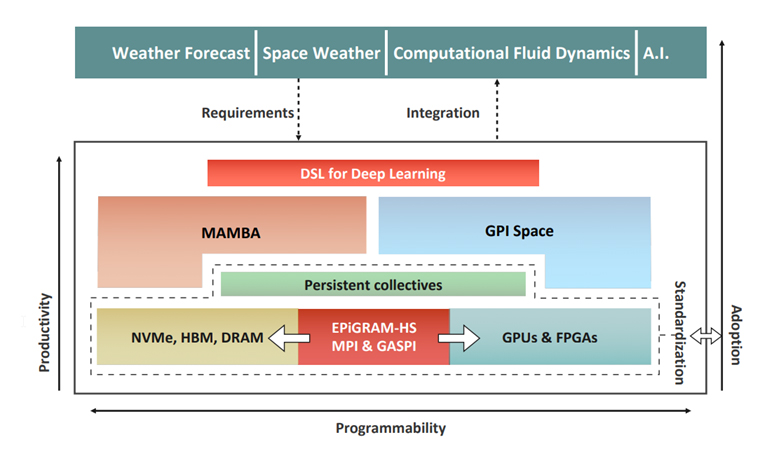As supercomputers move towards the exascale era and become more powerful every year, it is also becoming increasingly difficult to program them. EPiGRAM-HS is a project funded by the European Commission (in the framework of Horizon 2020) with the goal of developing a programming environment for heterogeneous exascale systems. Our institute is on board.
Heterogeneity With Advantages and Challenges
Exascale supercomputers are capable of exaFLOP and are the next milestone in the computing power of mainframe computer systems. Exascale – that means 10 to the power of 18 floating point operations per second. Extremely powerful machines. To increase the computing power or to reduce the energy consumption, heterogeneous systems are used, i.e. there is more than one type of processor or cores like GPUs and FPGAs.
This complexity of heterogeneous systems has many advantages. However, heterogeneous systems are more difficult to program because many codes cannot simply be transferred from one type of machine to another. The potential cannot be fully exploited because the developers do not yet know how to handle the machines.
In the EPiGRAM-HS project, six partner organizations are working together to provide a programming framework for the application experts. Each partner in the project is responsible for providing a small part of the framework. EPiGRAM-HS started in September 2018 and is funded for three years by the European Commission.



